Reading Time: 19 Min
You look in the mirror and breathe a sigh of relief. The hard part is over. The surgery has gone well. Soon, you’ll be able to breathe easier and sleep better. And on top of that, you’ll look better.
But there’s still the recovery process ahead of you. There are some expected post-surgical swelling and bruising. You will still need to devote two or three weeks to recover. The followings are rhinoplasty recovery tips – a comprehensive guide to nose surgery recovery and aftercare.
Some quick rhinoplasty recovery tips
It’s always good advice not to rush things, but there are things that you could do to get the best result after rhinoplasty and ensure a speedy recovery. Here are some quick rhinoplasty recovery tips that you can follow.
- Sleep and rest well after the operation.
- Raise your head while you are sleeping.
- Listen to your body and contact your doctor immediately if you feel anything unusual.
- Follow your doctor’s instructions.
- Avoid any kind of anti-inflammatory medications.
- Use a cold compress to reduce swelling.
- Avoid steamy showers and direct exposure to the sun.
- Eat room-temperature food and avoid a hot bowl of soup.
- Avoid spicy food.
- Maintain a nutritious and healthy diet.
- Avoid heavy exercises and tiring activities.
- Do not blow your nose.
- Do not wear glasses. Instead, use contact lenses or special glasses.
- Stop smoking during your recovery.
- Never miss your post-operative appointments.
- Go through the recovery process patiently.
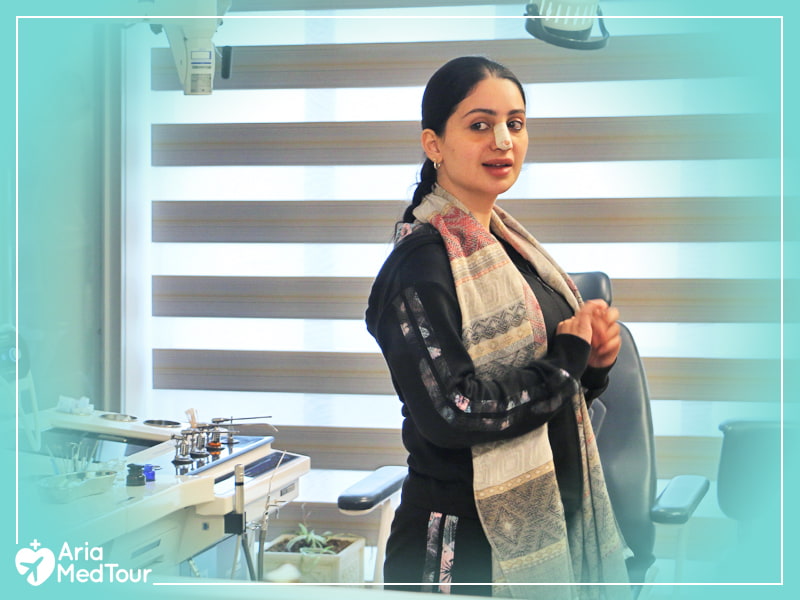
After the operation, all you need to do is to take care of yourself and enjoy the new look!
Nose surgery aftercare
The aftercare of any surgery is as important as the surgery itself. Nose surgery is no different. Without proper aftercare, your recovery might be delayed. Or worse, you might need to redo the surgery. To avoid any unnecessary hassles, follow these nose job recovery instructions and rhinoplasty recovery tips.
1. Doctor visit
No one knows your condition better than your doctor. He/she can give you some of the best rhinoplasty after care tips tailored to your specific condition. That’s why it’s important to never miss any of the scheduled visits. It’s also advised to contact your doctor if you feel something is not what’s supposed to be. And be sure to follow the instructions from your doctor to optimize your recovery time.
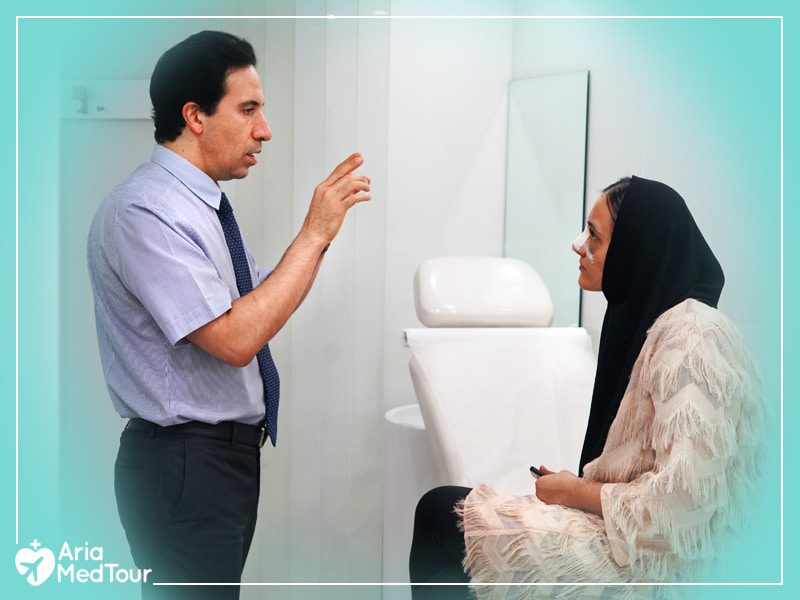
Your doctor will tell you all the aftercare tips you need to follow after your nose job.
2. Sleeping
As mentioned before, sleeping is important to nose surgery after care because this is when your body produces the energy that you need for the recovery process. There’s a chance that you might get trouble sleeping because of the post-operative pain, but a solid seven to eight hours of sleeping every night is necessary for a faster recovery.
3. Healthy diet
Do you know that you are not advised to drink anything right after getting back from the hospitalization unit? Are there other kind of food and drink that are not allowed post-surgery?
Here are a few rhinoplasty recovery tips – the dos and the don’ts on the diet side.
- On the day of the surgery:
Go easy on your digestive system. Go for soft foods such as chicken soup, baked or mashed potato or cooked vegetables.
Drink plenty of fluids and include some fiber in your diet. Do not use straw for drinking because using straw will cause pain in your nose.
On the flip side, avoid hard food and any food that causes indigestion. Don’t drink milk and stay away from pepper and spicy foods. And instead of orange juice or other acidic juices that might irritate your stomach, go for mango or pineapple juice.
- During the first week:
The first week is a crucial time in the recovery process. Many patients stop eating properly during this period due to the fear of nausea or vomiting. Lack of appetite is also common among those who have just gone through surgery. Whatever it is your reason for not eating properly, please remember that your body needs calories for proper healing. So, eat well.
Go shopping at least one day before your surgery to have a good stocks of food during the recovery days. It’s preferable to stay in a hotel that has a kitchen so you can prepare fresh food. In case you’ve had the surgery away from home. You can also order food from the hotel’s restaurant or nearby catering.
Starting from the second day after the surgery, you can practically eat anything want. Just make sure to avoid hot and spicy meals and hard foods. Try to stay away from biting sandwiches for two weeks.
The less processed food you eat the better. For those who hate cooking, eating canned food is still acceptable as long as you boil them for 20 minutes before you eat.
Nose Job Packages
Surgery + Hotel + Visa
Transfer + Interpreter
4. Taking the medicine
Your doctor will give you a specific list of medicines to take to help you heal and go through the recovery process as smoothly as possible. Trust your doctor and stick to the prescription.
But as the general guideline, during two weeks before and after the surgery, you should avoid any medications containing aspirin or ibuprofen such as Advil and Motrin IB because they may increase bleeding. The exception is when the medication is approved or prescribed by your surgeon.
Other things that you should steer away from are herbal remedies and any supplements that you can buy without a prescription.
5. Daily activities
What about your daily activities? Are there things that you shouldn’t do during your rhinoplasty recovery timeline? In general, you should avoid any activity that disturb your nose. But always discuss things with your doctor.
Let’s go through some common daily activities in this rhinoplasty recovery guide.
A. Brushing your teeth
There’s no restriction on brushing your teeth, but you should do it gently to limit movement of your upper lip.
B. Blowing your nose or sneezing
Blowing your nose is a no-no. At least not until your doctor allows you to do so. Even though you may have the urge to blow your nose off due to the swollen nasal tissue, it’s safer not to do so and use a saline nasal spray.
Sneezing is also prohibited during your recovery period. Try to take care of yourself in order not to get a cold and stay away from pepper. And, when you need to sneeze, do it through your mouth.
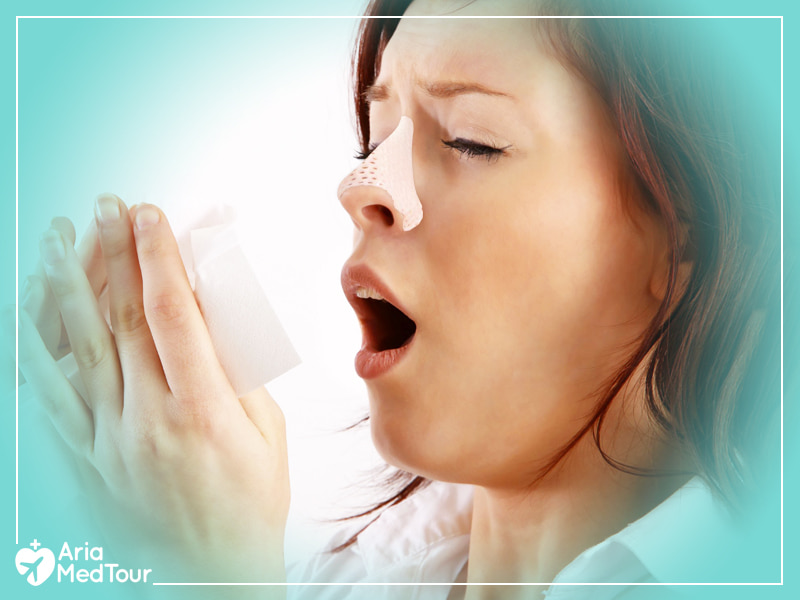
Sneeze with your mouth wide open as long as you’re not fully recovered from nose surgery.
C. Driving
Even though you might be a skillful driver, it’s better to have someone to drive you to your destinations. The reason is that the effect of anesthesia from the surgery can linger for a few days. You have to also consider the effect of post-op medication that you need to take during your recovery. These kinds of medicine might cause memory lapses, slowed reaction time, and impaired judgment.
D. Showering
While there are no restrictions against showering, it’s better to take a bath instead of a shower while you have bandages on your nose. And remember to use lukewarm water and not hot water.
E. Smoking
Stop smoking. Period. Smoking can slow down the healing process and increase the risk of getting an infection.
- Read More: Is it OK to smoke after rhinoplasty?
F. Drinking alcohol
Another substance that you need to get away from during your recovery is alcohol, at least for three weeks after the surgery. Alcohol is known to interact with some medications including acetaminophen which is used to relieve the post-op pain. The reaction could be harmful to your kidneys.
G. Wearing makeup
You can start wearing makeup right away after the surgery as long as you avoid the operated area. But remember not to apply any pressure to the nose for about three to four weeks after rhinoplasty.
H. Having sex
Avoid any adrenaline-rush activities including sexual intercourse for 10 days after surgery. These kinds of activities cause inflammation in the nose and sometimes bleeding.
Moreover, it’s possible to hurt the nose during sex when you are not fully in control of your action.
I. Crying, laughing, and smiling
During recovery, it’s advisable to avoid extreme facial expressions such as crying, laughing, and smiling. Moreover, crying can cause clog in your nose and nose-blowing is forbidden.
But as a human being, you might find it difficult not to express your feelings. Just try your best to suppress your urge to cry, laugh, or smile. Better yet, avoid any situation that might cause you to have those reactions, at least until your doctor gives you the green light.
J. Rubbing, hitting or bumping your nose
You should try to keep your nose out of any trouble at all costs. Rubbing, hitting, or even bumping your nose will most likely send you back to the surgeon for another session.
6. Returning to Work
Even though rhinoplasty surgery is normally an outpatient procedure, meaning you can go home the same day when the procedure is done, it’s important to give your body time to heal before going back to the routines.
Most of the swelling will subside within three days, and most patients can go back to work or school one week after their rhinoplasty. The signs of stitches or scarring should not be visible after two or three weeks post-op.
You May Like to See Before & After Photos of Rhinoplasty
You May Like to See Before & After Photos of Rhinoplasty
7. Sports and other physical activities
What you should remember is to refrain from strenuous activities such as sports and exercise for three to six weeks. They can prolong the healing process and increase the risk of complications.
A. Walking
Light walking might be the only recommended exercise. Do it for 15-20 minutes a day between day 3 to day 7 after rhinoplasty. Keeping your body mobile will improve its circulation, which will aid the recovery of bruising and swelling.
B. Strenuous activities/gym/sports/aerobic activities
Anything exhausting will take a toll on your body and hinder the healing process. Not to mention that heavy exercises have the risk of injuries as well. So, avoid the gym, running, jogging, wrestling, and the like for a while (3 to 6 months).
C. Swimming, sauna, and steam room
Most surgeons prefer that their rhinoplasty patients stay away from any routine and exercise involving water and pools for four to six weeks. This includes swimming, sauna, and steam room. The hot air from the sauna and steam room can potentially cause nose bleeding. There’s also the risk of nasal infection from water bacteria.
Other than that, swimming involves hard and fast breathing that could put pressure on your nose. The impact will add to the swelling around the nose and further delay the healing time.
In short, avoid swimming until your doctor says it’s okay.
D. Tanning/sun exposure
You should steer clear of direct exposure to the sun. Your nose is more prone to sunburn after the procedure. It can also increase the swelling and darken your scarring.
E. Lifting/bending
While you should refrain from intense exercises and heavy-weight lifting, exercising on stepping machines, running machines, and rowing machines are not forbidden. But there are footnotes here. Set those machines in the most convenient setting and start doing it after a two-week break post-operation. Also, remember to keep yourself well ventilated and hydrated.
Weights and any machines that work at higher intensity should be avoided for four to six weeks or more. Even though using lighter weight with fewer repetitions are fine, your focus should be more on the recovery.
- Also Read: Flying after rhinoplasty: Is it safe?
8. Wearing glasses
One week after the surgery and before the splint is removed, you can wear eyeglasses safely. The hard surface of the splint will protect the nose and prevent any changes in the nose’s shape.
However, after the splint is removed, you should not wear glasses or sunglasses for the next six weeks. The weight of the glasses would give pressure to the healing nasal bones and may deform the shape of the nose. You should also avoid long-term use of glasses during the first six months after surgery.
But what about those with limited vision who must wear corrective glasses? The six-month range must be too long to bear. But don’t worry! Here are a few rhinoplasty recovery tips for wearing glasses after the surgery.
- Using contact lenses can free you from all the concerns and hassles of wearing glasses.
- Using post-rhinoplasty glasses is the solution for those who don’t feel comfortable wearing such lenses or have an allergy to contact lenses. These ultra-light eyeglasses don’t rest on the nasal bridge.
- Taping your glasses to your forehead to prevent nose deformation using glass support. There are many of such supports available in the market.
- Read More: How to wear glasses after rhinoplasty?
Rhinoplasty recovery tips for nose splint removal
To help your nose maintain its new shape after the surgery, your doctor will use nose splints or rhinoplasty splints. These are two silicon or aluminum devices placed either inside or outside the nose. The splints also help to speed up the recovery process. The following nose surgery recovery tips can give you more insight into the nose splint.
1. When to remove nose splint?
Under normal circumstances, external splints can be removed after one week while internal splints/pads are removed within a few hours or a few days. But the time of splint removal depends on some factors and the surgeon tells the patient when to come back to get the splint removed.

Your doctor will remove your nose splint around 6 to 7 days after your surgery.
2. Should I use tape on my nose after nose splint removal?
According to most surgeons, rhinoplasty patients are recommended to tape their nose for at least one to two months post-op. The tape will help the skin to shrink-wrap down on the underlying bone and cartilage. Taping is also the main support for the new nasal structure after the nose job and can protect the newly modified structures when the splints and plaster casts have been removed.
How to use tape after rhinoplasty?
Here are the steps to use the tape.
- First, cut the thin nose tape into four pieces of 15 cm x 2.5 cm.
- Then start taping from the top. Tape the nasal bridge, each tape should cover half the width of the previous one.
- Next, tape the nose tip. Place the tape in a way that holds the tip tightly and point upwards.
- To remove the tape when you take a shower, make sure the tapes soak properly before gently peeling and removing them. Then dry the place carefully. You can remove the glue residue using a bit of alcohol.
When to change my tape?
Changing the tape should be done at least twice a week after rhinoplasty.
How long should I wear tape on my nose?
You should wear tape on your nose for at least one or two months after the surgery.
- Read More: Guide to taping after rhinoplasty
3. Nasal tampons debate
Nasal tampons are used to stop the bleeding. However, the process of inserting (and removing) tampons is painful. Fortunately, using the latest technology, it’s already possible to do a tampon-less procedure.
Tampons are only recommended in cases of severe bleeding. Please consult your doctor about it.
Nose job side effects to expect
The last thing that you should pay attention to is the side effects that might appear after the operation. Here are several common side effects that you can expect to experience after you undergo the surgery and some rhinoplasty recovery tips for managing them.

Swelling and bruising are the most common side effects you may see after the surgery.
1. Pain
The number one and the most obvious side effect of rhinoplasty is the pain and discomfort. Your nose will hurt for the first 36 to 72 hours after the surgery. The nose will remain tender and sensitive to touch for up to three months. The amount of pain varies from patient to patient, but according to most patients, it’s mild to moderate. And your doctor will prescribe you medication to lessen the pain.
2. Wound/incision
To achieve the best result, you must take care of rhinoplasty stitches following the surgery. You should keep external stitches clean and dry, while the dissolvable stitches will disappear within one or two weeks.
You can help the healing process by using hydrogen peroxide and antibiotic ointment. Apply the hydrogen peroxide to the suture lines inside the nose once a day using a Q-tip. The antibiotic ointment should be applied to the nostrils and incision area twice a day.
During your healing period, keep the moisture in the air using a humidifier. Choose a bath instead of a shower to keep your nose dry. Cover your nose with a piece of plastic if you must take a shower.
If you experience persistent bleeding, redness, fever, infection, or other problems, contact your doctor immediately to address the issue.
3. Swelling
If you are worried about persistent swelling, you can ease your mind because 90 percent of the swelling is usually gone within two to eight weeks. The crooked looking nose will also straighten out as the swelling slowly resolves. However, the swelling at the tip can take up to a year before it’s completely gone.
4. Bruising
Bruising might look scary, but it is your body natural response to trauma. In the time when your body experiences trauma, the blood from damaged blood vessels beneath the skin will pool into the area and cause discoloration.
Here are the things that you can do to treat bruising.
- Have enough rest
- Keep your head elevated above chest level as much as you can especially while sleeping
- Use ice packs around your eyes but never directly on your nose
- Drink much water
- Have a low-sodium diet
- Avoid blood thinning medications such as aspirin and ibuprofen
- Avoid hot baths and showers
- Avoid smoking and drinking
5. Bleeding
It’s normal to have slight bleeding along with drainage of mucus and old blood for a few days after the surgery. For this reason, your doctor might suggest that you wear a drip pad under your nose to absorb this drainage. You should change the gauze as often as your doctor’s suggestion.
To lower the chances of bleeding, your doctor may suggest you certain nose surgery post-op instructions, like those mentioned in this article, such as avoiding strenuous activities, not blowing your nose, choosing bath over showers, etc.
6. Breathing problems
During your recovery period, there’s a chance that you experience breathing difficulty. This is a temporary problem and it’s because your nose is swollen. After the swelling goes away, your breathing will become normal. Otherwise, you should consult with a doctor to get a second opinion.
7. Numbness
Following the surgery, expect numbness in the tip of the nose, upper front teeth, and the roof of the mouth. This is normal because nasal surgery usually causes temporary disruption of the nerves around the nose area.
The sensation will return slowly over several weeks. In some cases, it could take months. Consult your doctor in such cases.
8. Fever
Fever is also a common side effect of nose surgery. Usually, it’s on the category of low-grade fever (less than 101.5 F). The culprit is mild lung congestion. But don’t worry because everything should be resolved within the first or second day.
9. Lip dryness
One unexpected side effect of rhinoplasty patients is how dry their mouth gets. But it’s to be expected because, during the early days of recovery, the patients have to breathe exclusively through the mouth. This will cause the mouth and lips to be really dry.
Drinking a lot of water will help keep the mouth and throat moisturized. Also, use a good lip balm to prevent your lips from drying and cracking. Another thing that you can do is to use a humidifier to keep the air moist, especially in the winter.
10. Emergency cases
While we always hope for the best, and rhinoplasty is generally a safe procedure, sometimes things go wrong. Always prepare to anticipate the unexpected and contact your doctor immediately if you observe any of the following symptoms:
- severe nosebleeding or bleeding in the surgical site
- pus or cloudy discharge (which is not normal nasal mucus) from your treatment area(s) or elsewhere
- uncontrollable pain
- blisters or implant or graft extrusion (if applicable)
- displacement of the implant or graft (if applicable)
- high fever with a temperature over 101° F
- inability to pass waste (both liquid and solid)
- numbness in the legs (unless you had lipo as well)
- uncontrollable dizziness not related to the pain relievers
And if you notice any of following, please contact your surgeon and go to the emergency room as soon as possible:
- passing blood through urine, feces or spitting up blood
- abrupt and severe swelling and discoloration (aside from normal swelling)
- blackening of the skin that is not a bruise
- uncontrollable vomiting
- loss of consciousness not related to sedatives
- high fever with a temperature over 105° F
- convulsions
What you should prepare for an emergency?
- Have the list of emergency phone numbers handy. It includes your doctor’s and your hospital’s.
- Pack an overnight bag.
- Put all of your medication in one place, preferably in one bag.
What you should do in an emergency?
- The first thing that you should do is to STAY CALM
- Contact your surgeon or the on-call physician to let them know of your problem as soon as you can.
- If you are going to the emergency room don’t forget to tell your surgeon which hospital you’re going to
- Bring all of your medications with you to the hospital
- If it’s possible, keep a written journal (and if possible photos) of your symptoms and complaints
- Read More: Dos and don’ts after rhinoplasty
Nasal exercises or massages
Nasal exercises after rhinoplasty involves massaging the nasal bones after the surgery. It’s only recommended for patients whose nasal bones were “broken” during the reshaping process and is done to help further contour the nose during the recovery period.
After the nasal cast (splint) is removed after five to six days, the nasal bones might move back to their original position. The movement can occur between cast removal and six to eight weeks after surgery when the nasal bone completely heals and fuses into its new position. By doing nasal exercises, the bone becomes better fixed in the right position and stable enough to resist further movement. After this period, the only way to fix drifted out bone is to “rebreak” the bone.
Nasal massages done by both the doctor and the patient can prevent the movement of the nasal cartilages and will help optimize the surgical result.

You can gently massage your nose with fingers after the surgery.
Nasal exercise technique
Your doctor should schedule a few sessions in the first few weeks of the recovery process to do nasal exercises to prevent the bone from drifting out from the desired position during the recovery process. However, nasal exercise should also be done regularly by the patient at home.
Nasal exercise is also called “digital nasal exercise”. It’s done by applying pressure on the sides of the nose using your thumb and finger to put the bone back into the desired position. The thumb is preferable since it has a larger pad surface to press the bone.
It’s important that the pressure be applied only to the nasal bone – the upper one-third of the nasal bridge.
Don’t push the top of the bridge. Pushing the top of the bridge can inadvertently push the nasal bones out. It’s important to maintain the proper position of the thumb.
It’s also important that you push down hard enough that you can feel some degree of pain, then hold the position for about one minute. Otherwise, you won’t make any real change to the position of the bone. You should repeat the exercise approximately 20-30 times throughout the day.
Always refer to your doctor’s recommendation for the best method of exercise. The end goal is to get the desired symmetry of the nose, so one patient might need to do the exercise on both sides of the nose while others should focus only on one side.
When can I see my final results?
The good news is, that you will notice the majority of the result of the rhinoplasty procedure right away. And when the swelling goes down within three weeks following the surgery, you will see about 90% of the result. The less good news is, the final 10% of the change might not be noticeable until 6 to 12 months after the procedure when the swelling be completely gone.
That being said, most patients are very happy with the improvement of their rhinoplasty right after the procedure.
Now that we have discussed all the rhinoplasty recovery procedure and provided some tips, you can start enjoying the new and better you. However, if you have any other questions, feel free to contact us.
Share this article:
Related Articles
Feel free to express your opinions or ask your questions regarding the article

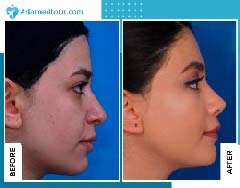

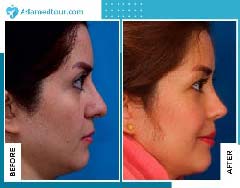

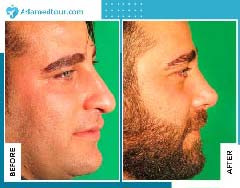


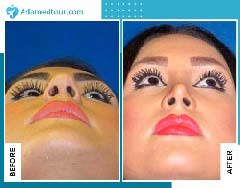

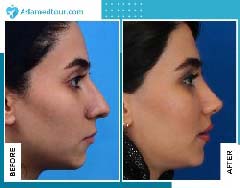




When & How Can I Wear Makeup After Rhinoplasty?
Skin Care After Rhinoplasty
Risks and Potential Complications of Rhinoplasty
How to Clean My Nose After Rhinoplasty?
How to Choose the Best Rhinoplasty Surgeon?